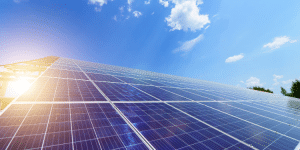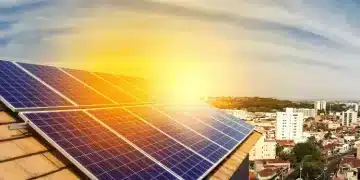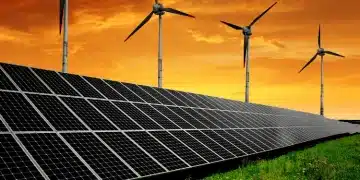From Coal to Solar: Understanding South Africa’s Critical Energy Transformation Journey
South Africa’s Current Energy Crisis
Dependency on Aging Coal Infrastructure
South Africa’s energy crisis is deeply rooted in its heavy reliance on aging coal power plants.
Unfortunately, this aging infrastructure is proving to be increasingly unreliable and costly to maintain.
Frequent blackouts, commonly known as load shedding, have become a daily reality for many South Africans.
These power outages can last for multiple hours and have severe implications for the nation’s economic growth.
Economic Impact of Frequent Blackouts
The economic impact of these blackouts is profound. Businesses, ranging from small enterprises to large industries, are significantly affected.
The interruptions in power supply lead to reduced productivity, increased operational costs, and in some cases, shutdowns.
The ripple effects on the economy include decreased investor confidence and a higher cost of living for ordinary South Africans.
Load shedding not only hampers economic growth but also affects the daily lives of people.
Routine activities such as cooking, cleaning, and studying become challenging without a reliable power supply.
This situation has driven many citizens and businesses to seek alternative solutions to maintain some level of energy security.
Challenges in Infrastructure Maintenance
One of the main issues contributing to South Africa’s energy crisis is poor maintenance of the existing infrastructure.
The coal plants are not only outdated but also poorly maintained, which exacerbates their inefficiency and increases the frequency of breakdowns.
The national power utility, Eskom, which is in charge of most of the country’s electricity generation, transmission, and distribution, has been criticized for its failure to maintain these vital energy assets properly.
Eskom’s financial troubles further complicate the situation, making it difficult to invest in necessary upgrades or new technologies.
Transition to the Next Phase
The ongoing energy crisis marks a critical juncture for South Africa.
While it poses numerous challenges, it also presents a unique opportunity for the country to rethink its energy strategy and explore more sustainable and reliable energy solutions.
Transitioning to renewable energy sources, like solar and wind power, could offer a more stable and eco-friendly alternative and potentially alleviate the widespread power shortages that currently plague the nation.
As we dive deeper into examining private and public responses to this crisis, we’ll see how citizens and businesses are innovatively coping with energy shortages and what potential lies ahead for South Africa in the renewable energy landscape.
| Scenario | Before | After (Current Situation) |
|---|---|---|
| 🌞 Solar Adoption | Low adoption of alternative energy | Increasing adoption of solar panels by businesses and households seeking energy independence |
| 🏙 Wealthier Areas | Limited access to private energy solutions | Affluent areas like Sandton seeing significant investment in solar power, with many homes and businesses self-sufficient |
| 🏘 Poorer Areas | Access to energy solutions limited | Low access to solar solutions, with most relying on the failing national grid, despite a few exceptions |
| ⚡ Energy Inequality | Equal energy access for all | Widening energy divide with wealthier individuals able to invest in solar, while poorer areas face prolonged blackouts |
| 🌱 Bridging the Energy Divide | Limited focus on energy equity | Calls for subsidies, financing options, and community energy projects to bridge the gap and make solar energy accessible to all |
South Africa’s Renewable Energy Potential
The country is blessed with an abundance of solar and wind resources that are available year-round, offering a stable foundation for a sustainable energy future.
With the country’s energy landscape being scrutinized, it’s clear that the move to renewable energy isn’t just an idealistic pursuit but a practical solution with far-reaching benefits.
Solar Energy: A Unique Opportunity
The World Bank has identified South Africa as having a unique opportunity in solar energy generation.
The country’s vast and consistent sunshine makes it one of the most advantageous locations globally for harnessing solar power.
Solar energy is not only a sustainable alternative but also an economically viable one.
Experts argue that the shift to renewable energy like solar isn’t a cost but an economy, as it is cheaper to produce energy from renewable sources compared to coal, oil, diesel, and nuclear energy.
This shift could dramatically reduce the electricity costs for the nation, making energy more affordable and accessible to its citizens.

Wind Energy: Complementing Solar
While solar energy gets a lot of attention, wind energy is also a pivotal part of South Africa’s renewable energy potential.
The country’s coastal regions, with their consistent and strong winds, provide ideal conditions for wind farms.
This combination of solar and wind resources could enable South Africa to create a robust and resilient energy grid that leverages the strengths of both types of renewable energy.
The potential for wind energy generation complements solar, ensuring that the energy grid remains stable even during less sunny periods.
The Promise of Green Hydrogen
Green hydrogen is produced using renewable energy to split water molecules, generating a clean and versatile fuel that can be used in various industries.
The country’s natural resources make it an excellent candidate for large-scale green hydrogen production, positioning South Africa as a global player in this emerging market.
According to World Bank, investments in green hydrogen could not only meet domestic energy needs but also turn South Africa into a major exporter of this clean fuel, thus boosting its economy.
Moving Forward
The transition to a renewable energy system is laden with both opportunities and challenges.
While the potential benefits are immense—ranging from reduced energy costs and improved energy security to environmental sustainability and economic growth—it is essential to navigate this transition carefully.
Addressing the socio-economic disparities and ensuring the development of a skilled workforce for the renewable sector are crucial for an equitable and successful energy transition.
Transitioning to renewable energy will be a defining factor in shaping the future of South Africa, affecting not just the energy sector but also having broader economic and social implications.
This move towards an energy system powered by the sun and wind holds the promise of a brighter, more sustainable future for all South Africans.
Economic and Social Impact of Energy Transition
South Africa stands on the brink of a monumental transition from coal dependency to renewable energy.
The shift presents numerous economic and social benefits, promising a more sustainable and equitable future.
Reducing Electricity Costs
A critical aspect of the renewable transition is the potential reduction in electricity costs.
South Africa’s over-reliance on aging coal infrastructure has led to frequent blackouts and soaring energy expenses.
Transitioning to solar and wind energy could cut electricity costs by half.
This significant cost reduction would benefit both businesses and households, making energy more affordable and reliable.
Alleviating Energy Poverty
One of the most profound impacts of the renewable transition is its potential to lift millions out of energy poverty.
Currently, about 10 million South Africans cannot afford consistent access to electricity despite having enough income for other necessities.
Providing affordable and reliable energy through renewables would profoundly improve these citizens’ quality of life.
Access to reliable electricity means better educational opportunities, improved health care, and the ability to engage in economic activities beyond subsistence.
Promoting Entrepreneurship
The renewable energy transition also presents a golden opportunity to foster entrepreneurship.
Reliable and affordable energy can empower individuals to start and grow businesses.
Entrepreneurs can leverage renewable energy to create businesses that were previously not viable due to high electricity costs and frequent outages.
This would, in turn, spur economic growth and create jobs, thereby reducing inequality.
Reducing Inequality
Currently, energy access highlights stark inequalities within South Africa.
Wealthier areas and businesses can afford to invest in private solar installations, while poorer communities remain at the mercy of unreliable, coal-generated electricity.
By drastically cutting energy costs and providing widespread access, the renewable transition could serve as an equalizing force.
It offers a path to a more equitable distribution of resources and opportunities across different socio-economic groups.
Transition to the Next Topic
While the benefits are immense, the challenges in this transition are equally daunting.
The coal industry, employing a significant portion of the workforce in regions with high unemployment, poses a substantial obstacle.
Addressing these challenges requires careful planning, investment in renewable infrastructure, and strategies to mitigate job losses in the coal sector.
By understanding both the economic and social impacts, South Africa can strategically navigate its energy transition, ensuring that the benefits are equitably distributed and that the shift supports sustainable development for the entire nation.
Challenges in the Transition
Employment Considerations
One significant challenge in South Africa’s path to renewable energy is the coal industry’s employment factor.
Currently, approximately 100,000 people work in the coal sector, primarily located in regions that already grapple with around 30% unemployment rates.
Transitioning to renewable energy necessitates careful handling of potential job displacement in these areas.
Given the socio-economic ties and the dependency on coal, these regions represent a complex challenge requiring solutions that involve retraining, skill development, and economic diversification for sustainable employment.
Financial Implications
The financial hurdles are daunting, with an estimated $250 billion needed over the next three decades to build renewable infrastructure.
Such a hefty price tag demands strategic financial planning and international investment.
The scale of this investment challenges the government’s existing financial structures, which rely heavily on the revenue streams from coal and other fossil fuels.
A well-thought-out approach is vital to attract local and foreign investment while ensuring transparent financial management that can pave the way for a sustainable energy future.
Revenue Streams and Government Concerns
A major concern for the South African government relates to tax and revenue generation.
Fossil fuels provide a significant source of revenue in the form of taxes and royalties.
The government is grappling with how to sustain its revenue without the traditional fossil fuel tax structures.
This issue is compounded by their need to find efficient ways to monetize the sun and wind — natural resources that do not generate revenue in their raw form.
The transition to renewable energy entails addressing these multifaceted challenges.
By doing so, South Africa could not only overcome current obstacles but unlock immense potential for sustainable growth and prosperity.
This journey requires innovative strategies and collective effort to balance employment, financial, and fiscal challenges.





